5 Easy Spikey Ball Exercises to Release Muscles
Looking for a way to relieve your muscle tightness? Spikey balls are designed to target painful trigger point areas to help soothe muscular pain and discomfort.
Here, our Physiotherapist Morgan demonstrates 5 easy exercises to do at home using a spikey ball to ease your muscle pain.
1. Gastrocnemius
The gastrocnemius, or calf muscle, plays a crucial role in our daily movement and activities. If you’re experiencing tightness or discomfort in this muscle, using a spikey ball can provide much-needed relief.
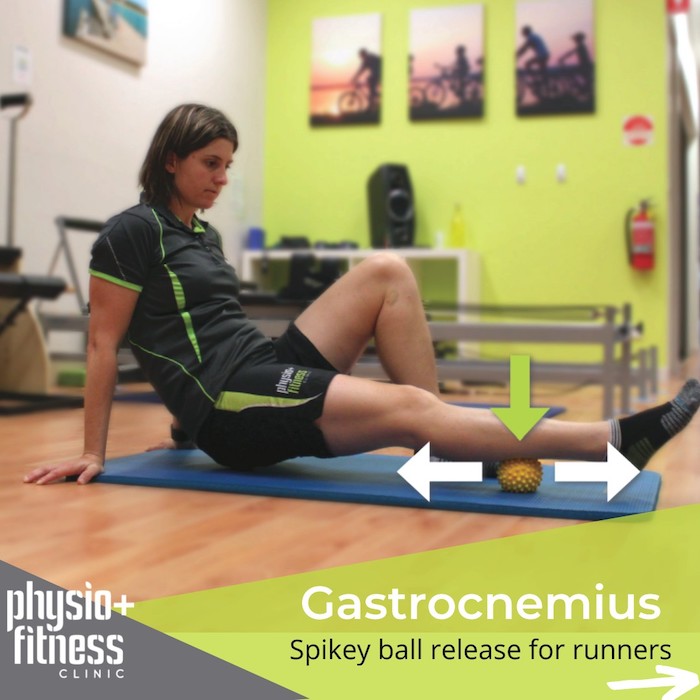
- Extend one leg straight in front of you, keeping the other leg bent with your foot flat on the ground for stability.
- Place the spikey ball underneath your calf muscle, targeting the area where you feel tension or discomfort.
- Shift your body weight onto the spikey ball by gently pressing down.
- Once you’ve found a tender spot or trigger point in the gastrocnemius, begin rolling the spikey ball in small circular motions.
- Apply moderate pressure, but remember to stay within your comfort zone.
- As you roll, focus on releasing any tightness or knots in the muscle.
2. Tibialis anterior
The tibialis anterior, a muscle located in the front of the lower leg, can often become tight and tense due to various factors such as overuse or improper footwear. Using a spikey ball can help release the tension in this muscle, providing relief and promoting flexibility.
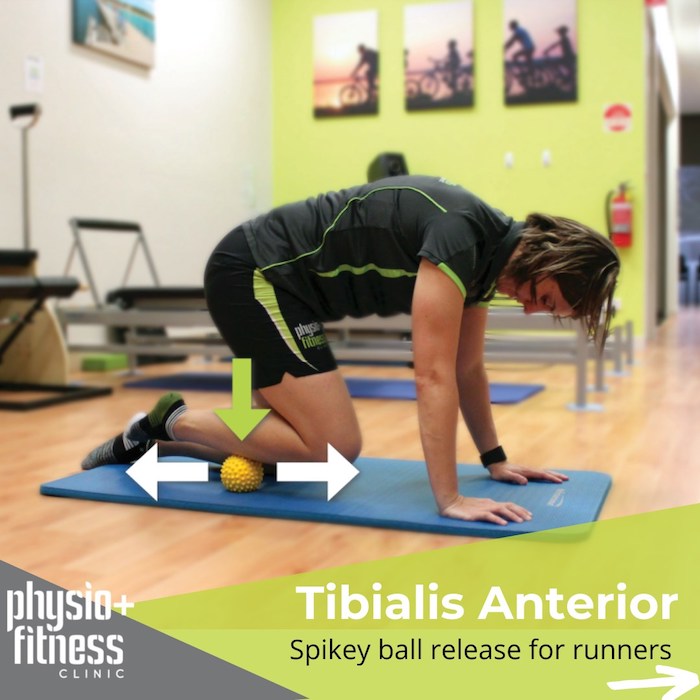
- Place the spikey ball on the floor in front of you.
- Kneel on your shins and position your shins on top of the spikey ball, targeting the area where you feel tension or discomfort in the tibialis anterior.
- Your back should be straight and arms holding you up on the ground.
- Once you’ve found a tender spot or trigger point in the tibialis anterior, begin rolling your shins back and forth over the spikey ball.
- Apply moderate pressure, but remember to stay within your comfort zone.
- As you roll, focus on releasing any tightness or knots in the muscle.
- Take slow, deep breaths as you continue rolling your shins over the spikey ball. Relax your muscles and allow the pressure from the ball to work its magic, gradually releasing tension.
- Move the spikey ball to different areas of your shins, targeting any other points of tension in the tibialis anterior.
3. Hamstring
The hamstrings, a group of muscles located at the back of the thigh, can often become tight and tense due to various factors such as prolonged sitting or intense physical activity.
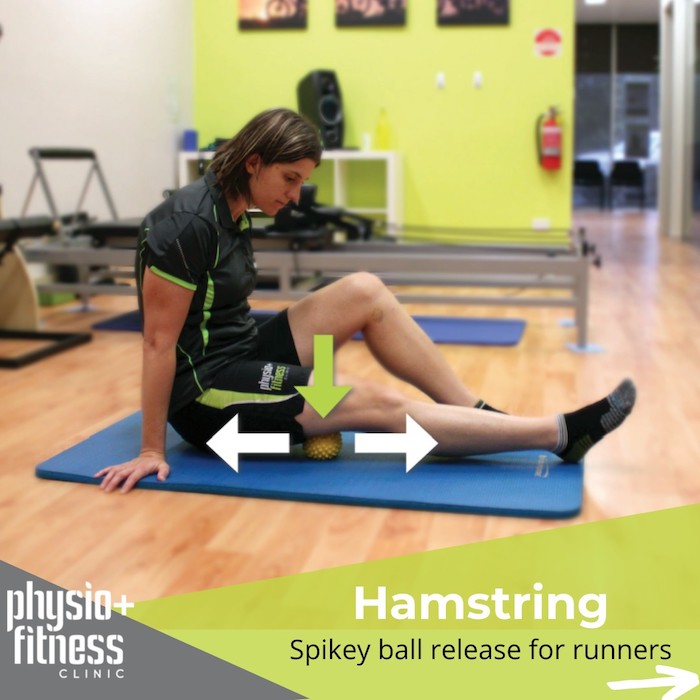
- Sitting, extend one leg straight out in front of you, keeping the other knee bent.
- Place the spikey ball underneath the hamstring of your extended leg, targeting the area where you feel tension or discomfort. Use your body weight to apply pressure onto the spikey ball by gently pressing down.
- Once you’ve found a tender spot or trigger point in the hamstrings, begin rolling the spikey ball in small circular motions.
- Apply moderate pressure, but remember to stay within your comfort zone. As you roll, focus on releasing any tightness or knots in the muscle.
- Move the spikey ball to different areas of your hamstring, targeting any other points of tension.
- Repeat the rolling and releasing process for a few minutes or until you feel a noticeable improvement in muscle flexibility and relief from discomfort.
4. Hip Flexor
The hip flexors, a group of muscles located at the front of the hip, can often become tight and tense due to factors such as prolonged sitting or intense physical activity. Using a spikey ball can help release the tension in this muscle group, providing relief and promoting flexibility.
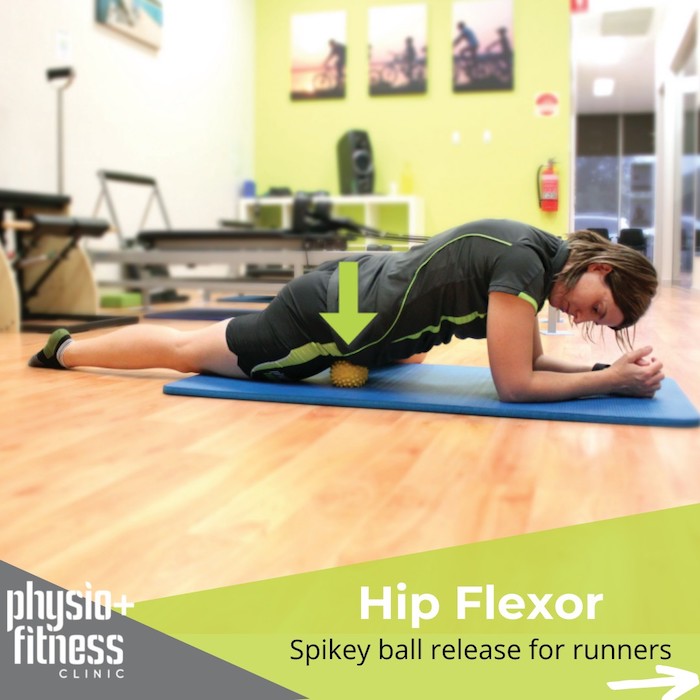
- Lie down on your front.
- Extend your legs straight behind you, keeping them hip-width apart.
- Place the spikey ball underneath one hip flexor, targeting the area where you feel tension or discomfort.
- Use your body weight to apply pressure onto the spikey ball by gently pressing down.
- Apply moderate pressure, but remember to stay within your comfort zone.
- Take slow, deep breaths. Relax your muscles and allow the pressure from the ball to work its magic, gradually releasing tension and promoting relaxation.
5. Plantar fascia
The plantar fascia, a thick band of tissue that runs along the bottom of the foot, can often become tight and painful due to factors like overuse, improper footwear, or certain medical conditions.
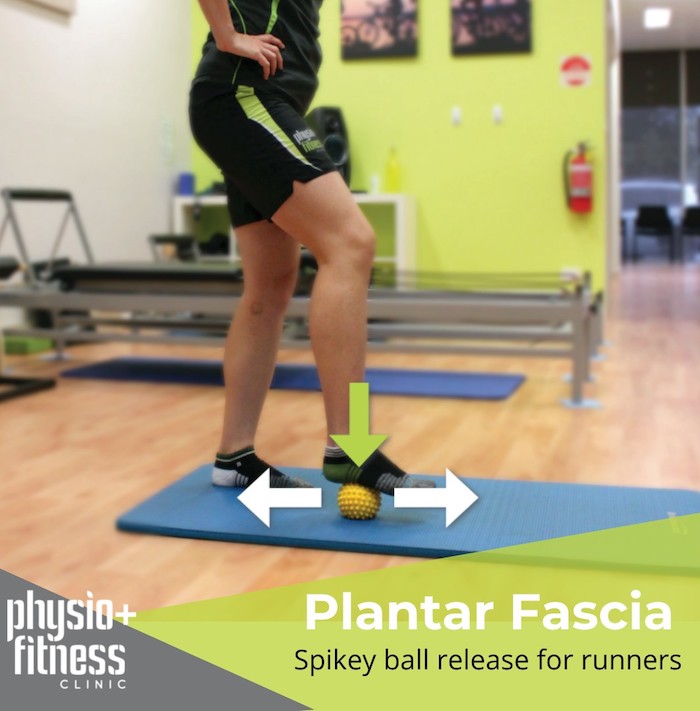
- You can do this exercise standing or seated.
- Place the spikey ball on the ground in front of you.
- Place your foot on top of the spikey ball, targeting the area where you feel tension or discomfort in the plantar fascia.
- Apply gentle pressure by pressing down on the ball with your foot.
- Begin rolling your foot back and forth over the spikey ball, from the heel to the base of your toes. Apply moderate pressure, but make sure not to exceed your comfort level. As you roll, focus on releasing any tightness or knots in the plantar fascia.
Alternatives to a spikey ball
Before investing in a spikey ball, you might want to give a tennis or golf ball a try.
By using a spikey ball, tennis or golf ball, you can experience reduced pain, enhanced flexibility, and improved blood flow to your muscles.
Here at Physio and Fitness Clinic, we can assist you with your sports injuries, and build core strength. Make an appointment with a physio today for physiotherapy and physio run pilates.
